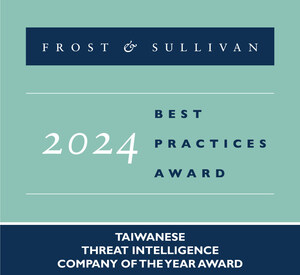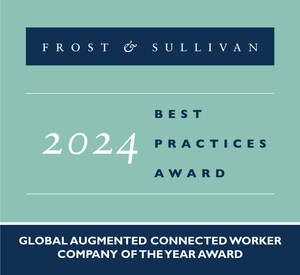Frost & Sullivan Reveals the Top Ten Technologies Changing the Field of Education
AI, mixed reality, and wearables are key technologies set to shape the classroom of the future
SANTA CLARA, California, Jan. 3, 2018 /PRNewswire/ -- The education space has gone through a metamorphosis in how knowledge is disseminated, from augmented classroom learning to expanding beyond four walls into open online universities. Advances in technologies, such as AI, wearables, and robotics, have and will continue to impact the future of education. Education trends will increasingly emphasize flexibility of curricula, pace of learning, and location of knowledge transfer.
Frost & Sullivan's recent analysis, Technologies Impacting the Future of Education, explores advanced technologies in which education stakeholders are investing, as well as what impacts technological trends, such as increasing digitization, connectivity, and sustainability, will have on classrooms of the future.
To access more information on this analysis, please visit: http://frost.ly/22t
"With the proliferation of remote education systems, an increase in the demand for technologies such as cloud computing is imminent. Infrastructure-as-a-service and platform-as-a-service are poised to evolve as key business models in the educational sector," said Sudeep Basu, Innovation Services Practice Leader at Frost & Sullivan.
Technology highlights include:
- Artificial Intelligence (AI): Technology vendors, educational institutes, and service providers are investing a large amount of time, capital, and resources developing embedded AI applications and other AI-enabled supportive products. The government plays a vital role in accelerating the adoption of educational AI systems by creating an investment-friendly environment and regulation policies that will favor the education ecosystem.
- Mixed Reality: The rising popularity of mixed reality products, such as HoloLens and its ability to provide an experiential learning experience through realistic environment view, will be the main driving factor for this technology over the next five years. The US mixed reality education market is expected to cross the $6 billion mark by the year 2022.
- Robotics: Telepresence robots and teachable robotic agents are key emerging platforms in the educational sector. Robots enable personalized and remote learning and improve interactivity, thereby providing a new learning experience. Robot control and teaching modules and their use in pre-schools are key focus areas. Multi-purpose robots are likely to gain attention from the educational sector in the longer term.
"There's no doubt that rising efforts in technological development across the globe will help increase the adoption rate of these technologies over the next three years. Wearables, touchless sensing, brain-computer interface (BCI) technologies, and advances in conductive polymers all will contribute to technology adoption in the educational sector," concluded Basu.
Technologies Impacting the Future of Education is part of Frost & Sullivan's global TechVision Growth Partnership Service program.
About Frost & Sullivan
Frost & Sullivan, the Growth Partnership Company, works in collaboration with clients to leverage visionary innovation that addresses the global challenges and related growth opportunities that will make or break today's market participants. For more than 50 years, we have been developing growth strategies for the global 1000, emerging businesses, the public sector and the investment community. Contact us: Start the discussion
Technologies Impacting the Future of Education
D7F2-TV
Contact:
Francesca Valente
Corporate Communications – Latin America
P: +54 11 4777 5300
F: +54 11 4777 5300
E: [email protected]
http://ww2.frost.com





Share this article